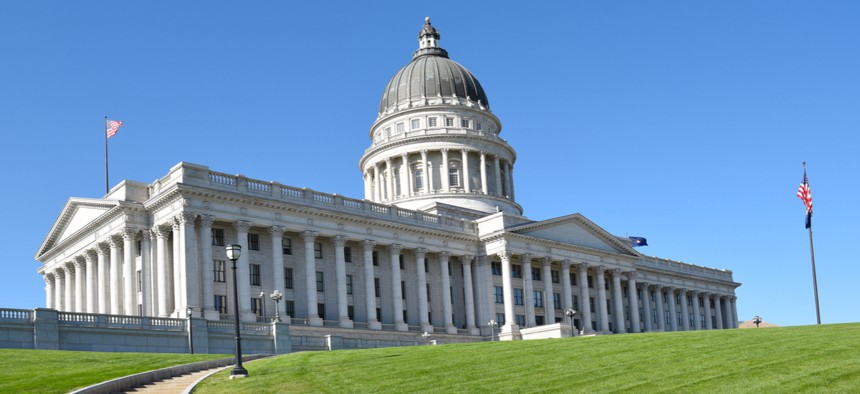Utah Adds Long-Term Budgeting to Its Planning Strategies

The Utah State Capitol in Salt Lake City Shutterstock
New law builds on earlier steps toward better fiscal management
This article was originally published by The Pew Charitable Trusts as part of the States' Fiscal Health Initiative and was written by Mary Murphy, Airlie Loiaconi, and Patrick Murray.
A new law in Utah will strengthen state efforts to ensure fiscal stability. The measure creates new requirements to identify and manage the effects of potential economic and policy changes on long-term spending and revenue.
Governor Gary Herbert signed House Bill 452 on March 19, helping to further enhance Utah’s reputation as a national leader in fiscal management. The measure requires the state’s Office of the Legislative Fiscal Analyst to produce long-term budgets and regularly conduct comprehensive budget stress tests. Sponsored by Representative Brad R. Wilson and Senator Kevin T. Van Tassell, the bill received unanimous support in both houses.
In 2008, Utah started regular analyses of revenue volatility, becoming the only state at the time with a statutory requirement to produce these studies on a recurring basis. Released every three years, the analyses offered lawmakers data-driven observations on tax revenue volatility and how it contributes to overall budget uncertainty. The information then informs legislative decisions on important policy questions, such as setting the appropriate size for the state’s reserve accounts.
The new law builds on current practices, making the volatility studies part of a three-year cycle that examines long-term fiscal sustainability. In the first year, the Office of the Legislative Fiscal Analyst will publish its volatility report. In the second, it will calculate a long-term budget that includes programs appropriated from major funds. Finally, in year three, the office will conduct a budget stress test that compares estimated future expenditures to expected revenue under multiple economic scenarios.
As a result of the new law, Utah policymakers will have more information to help anticipate potential shortfalls and avoid sudden adjustments to tax rates or program funding.
“This is another tool in our Legislative Fiscal Analyst’s office that they can use to give us good information so we … can make good decisions,” Rep. Wilson said.
Establishing regular processes to evaluate state revenues, forecast spending, and plan for economic shifts can bolster fiscal management in any state government. Utah’s new law offers a promising example.
“I believe we’ve broadened our focus from one-year budget cycles and two-year election cycles to 10- and 15-year business cycles,” said Jonathan Ball, director of the Office of the Legislative Fiscal Analyst.
In the coming months, Pew will release research that takes a closer look at long-term budgeting and stress testing activities across states and identifies strategies to maintain balanced budgets.
Mary Murphy is a director, Airlie Loiaconi is an associate, and Patrick Murray is a senior associate with The Pew Charitable Trusts’ project on states’ fiscal health.
NEXT STORY: New Study Grades State Government Spending Websites





